[ad_1]
The new Nomiku is circulating chilled water to cool down the bubbly. Temperature is listed in Celsius.
Megan Geuss
Nomiku, a small company founded by culinarily-inclined couple Lisa and Abe Fetterman, launched a Kickstarter this week to raise money for their second retail-ready sous-vide machine. The new machine, which will have a Wi-Fi connection and the ability to integrate with a companion app, was funded in under 12 hours. That’s impressive for a Kickstarter, but even more impressive considering how relatively obscure sous-vide still is outside of fine-dining and high-tech circles.
Sous-vide is a method of cooking food in a vacuum-sealed bag in precisely temperature-controlled water. Preparation usually requires a very long cook time, but it allows food to cook at a much lower temperature, which many people find makes meat more tender and vegetables better-flavored because they’re all cooked evenly throughout. Although the method was discovered hundreds of years ago, it has enjoyed a resurgence in popularity in the last decade thanks to “the scientific cooking movement,” as the New York Times called it in 2005: “Cryovacking, which is more often called sous vide (French for ''under vacuum''), is poised to change the way restaurant chefs cook—and like the Wolf stove and the immersion blender, it will probably trickle down to the home kitchen someday.”
If Nomiku and its gaggle of competitors have their way, “someday” is today. The original Nomiku, which went on sale last year, was one of the first sous-vide appliances that was affordable to regular households at $300. Today, competing companies Anova and Sansaire both have sous-vide cookers that look similar design-wise and cost about $100 less than Nomiku’s first-generation sous-vide appliance, which you can find on Amazon. A company called Mellow is also taking pre-orders for a device that is Wi-Fi connected, but it comes with its own tub, which is either a turn-off for people with smaller kitchens or a huge boon for people who do have the space and want something that looks more elegant. (Our senior reviews editor Lee Hutchinson just put his name on the list for a Mellow—look for a sous-vide cook-off later in the year!)
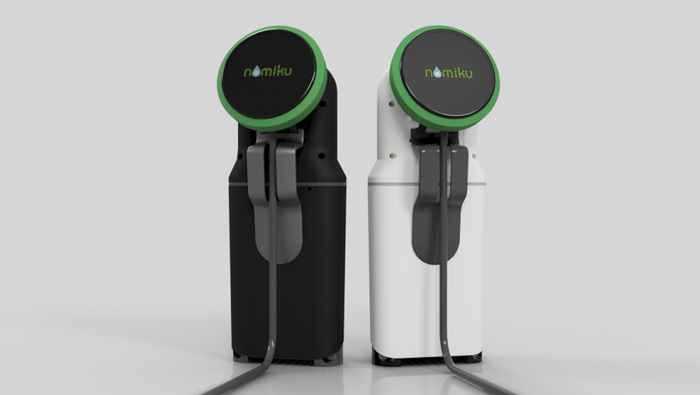
Nomiku
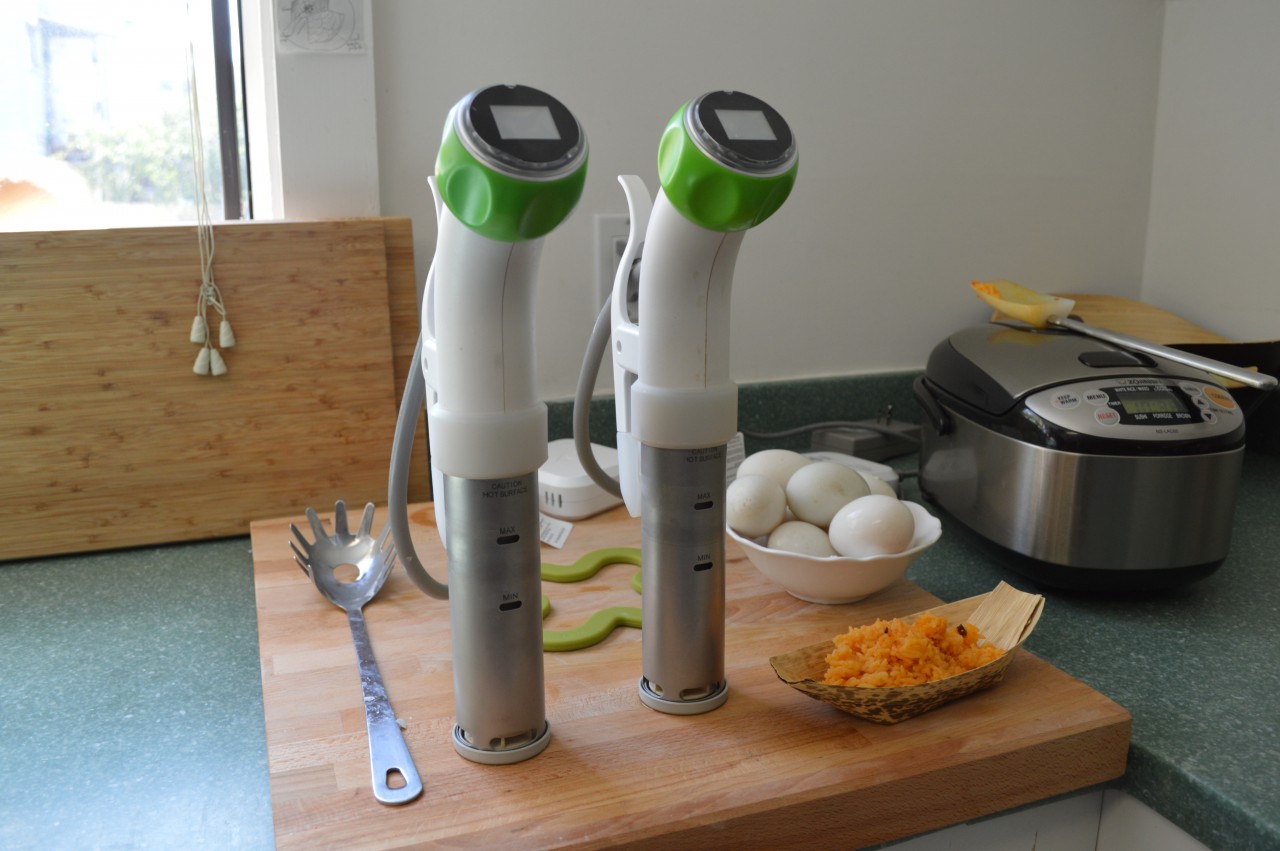
Megan Geuss
And just as everyone is getting to the sous-vide party, Nomiku is gearing up for its second-generation appliance. The new Nomiku will replace the original coil heater with a PTC heating unit, which co-founder Abe Fetterman said is safer, and it now draws 1200 watts, so it will heat water 15-20 percent faster than the old version. It will also have a simpler design with just eight moving parts (“the new Nomiku has a lifetime of 10 years” CEO Lisa Fetterman told us). And, the new version will clip to the front of your pot for stability.
Now we’re cooking without gas
The startup invited a small group of press to its San Francisco office to have a breakfast cooked by the city’s only Guamanian restaurant, Prubechu. Chef Shawn Naputi had sous-vided grapes for a grape salad, and for the main dish he used the method to cook duck egg. Eggs are a common sous-vide staple, because they’re hard to mess up and they don’t require a plastic bag to cook in a sous-vide. The most serious gastronomes will insist that, besides eggs, cooking protein and vegetables sous-vide requires that the food be vacuum-sealed first. For the Nomiku, as with other household-geared sous-vide machines, any zip bag will do, as long as the air is pressed out as well as possible.
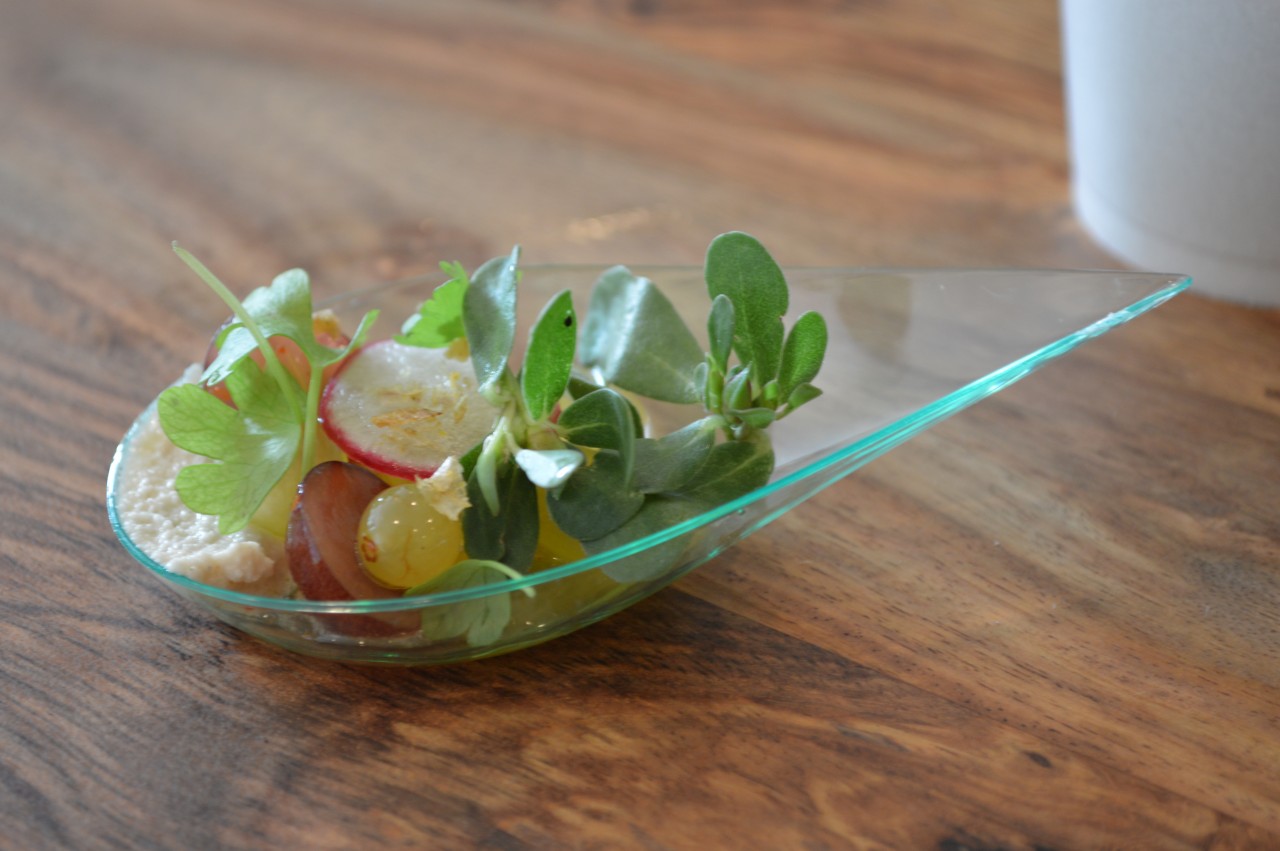
Megan Geuss

Megan Geuss
Chef Naputi also cooked slices of pork belly with a “quick cure in a vacuum seal,” for 36 hours in the sous-vide. Many chefs choose to sear certain meats after they sous-vide them, because the advantages of sous-vide can be offset by the fact that the food doesn’t brown, so it doesn't look how it’s supposed to look, and it’s missing that caramel flavor. Kitchen supplier D’Artagnan explained in a blog post:
Sous vide also prevents browning, or the Maillard reaction, which happens at temperatures above the boiling point of water. Maillard reaction is a chemical reaction between amino acids and sugar which occur when high heat is applied, browning the surface and adding layers of flavor. Sous vide cooked meats are missing the desirable 'crust' and the extra flavor that comes along with it. You can pre- or post-brown the meat by grilling or searing in a very hot pan. Secondary browning is a tactic often used in professional kitchens.
CEO Lisa Fetterman said she uses the sous-vide to make meat, eggs, vegetables, dolce de leche, yogurt, cheese, and beer. The new Nomiku is circulating chilled water to cool down the bubbly. The Nomiku doesn't have a cooling element, but it circulates ice-water well, so Fetterman also uses it to chill wine. ”Game is really easy to overcook and with sous-vide you can’t overcook things unless you try really hard,” she explains. “I even warm my baby’s milk with it, I turn it to my body temperature.”
”When I first tasted a sous-vide egg it was so custardy and good,” she said. “I thought, if I know that I can cook good food this easy then why the hell would I ever want to go back? People need to eat well. We want to eat real food and we want to savor the food.”
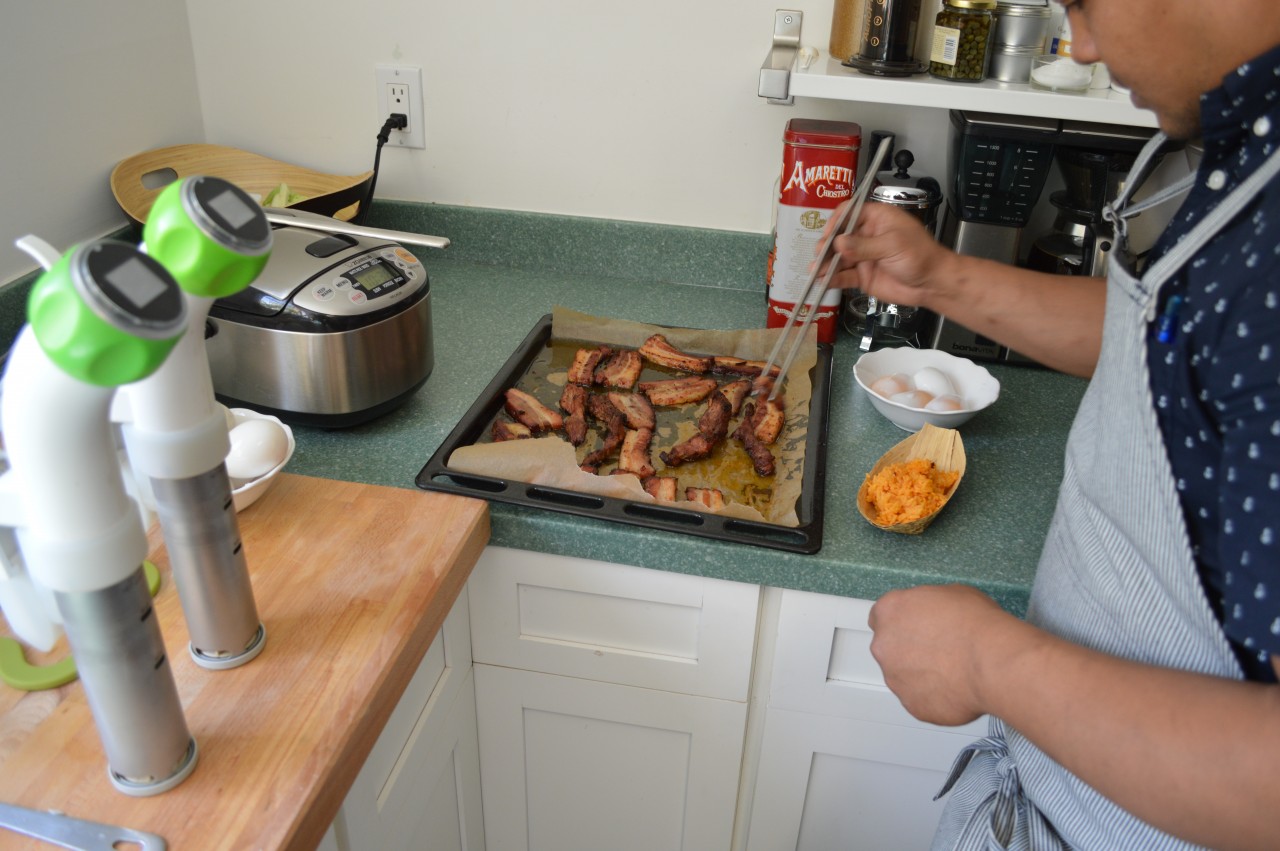
Megan Geuss
Reaching out, touching me, touching you
Now the trick for Nomiku and its competitors is to sell the general public the idea that sous-vide is an appliance that they want. Although the company raised $875K in its first Kickstarter, sous-vide’s popularity is still generally limited to people whose interest exists where gastronomy and technology overlap. Those two scenes have traditionally had a poor women-to-men ratio, and unsurprisingly, about 70 percent of the original Nomiku’s backers were men. The second time around, however, the company wants to help along the people—men and women—who have only just heard about sous-vide for the first time.
Until recently, immersion circulators have generally been clunky and expensive.
Megan Geuss
Nomiku's new app, Tender, will have an educational thrust to it. Nomiku says when the app launches there will be an Android version as well.
Megan Geuss
Nomiku has been working with prominent chefs like Chris Cosentino, Hugh Acheson, and Harold McGee to pre-populate the app with recipes that people can make at home. Users will also be able to add their own recipes and share them.
Megan Geuss
When you've selected the recipe you want, you can tell the Nomiku to start warming up to the appropriate temperature from your phone (but a network connection isn't necessary—you can do it the old-fashioned way from the device itself too).
Megan Geuss
That’s where the Wi-Fi connectivity and the app come in. Nomiku’s forthcoming app, called Tender (not to be confused with Tinder), lets users upload and share recipes and then send temperature control instructions from those recipes to the device from anywhere. “There’s a huge education component and it’s one that we have to tackle with connectivity,” Fetterman said. “You bought this [device] and you were intimidated, but you’re curious. And we’re going to hold your hand the whole way. Put [the Nomiku] in the pot and then put in the egg.”
Made in America?
Another thing that’s different about the second version of the Nomiku is that while the first version was built in Shenzhen, China, the second version will be made in America, specifically in the San Francisco Bay Area, which is something that tech hardware companies have generally considered folly (look only to the inglorious fading-away of the Nexus Q). The company recently made the pledge to source parts and tooling locally at a national Maker Faire hosted by the White House.
The original Nomiku was manufactured in China as part of a program called Haxlr8r (pronounced: Hack-celerator), which takes hardware startups and gives them basic funding and precious time on Shenzhen assembly-line floors. (Ars wrote about another Haxlr8r project called Foc.us one year ago. The company is still building and shipping its electroshock headsets.) “What we learned is that there’s no special magic in China,” Lisa Fetterman said. “Here, we can iterate much faster on design changes.”
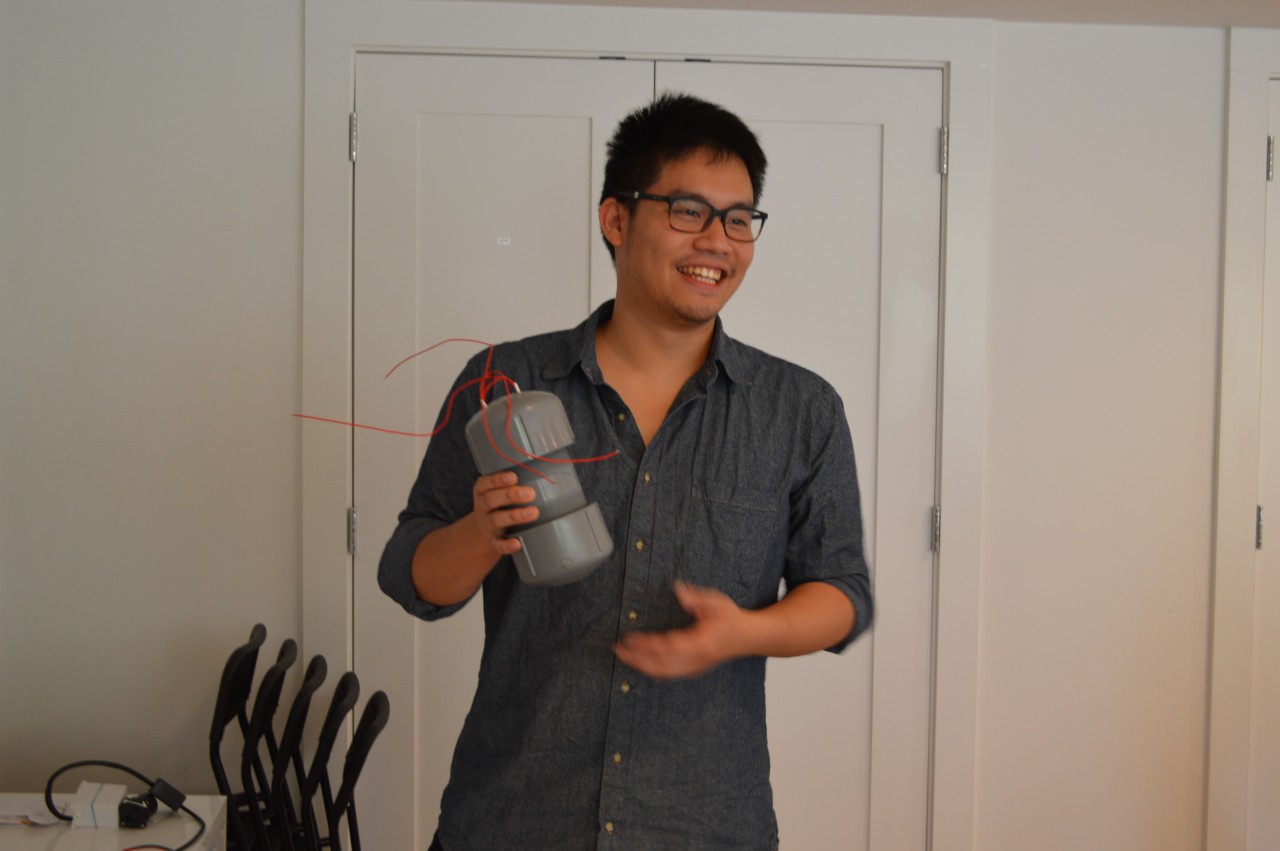
Megan Geuss
“What China is super super great at is copying things,” she continued. “If you have your design down pat, then you just ship it off to China and it’s great, but if you’re still prototyping, you need to constantly redesign at every testing level.”
The company wouldn’t say where exactly the new Nomiku would be assembled, but it did say it had been working closely with Spark, another Haxlr8r graduate, to make their devices Wi-Fi compatible. It also worked with Oakland-based 3D-printing workshops Fathom and Fictiv to design prototypes. Nomiku’s designer, Wipop Bam Suppipat, assured the press that prototyping in America makes business sense for Nomiku, at least for now. “With our partners in Oakland we manage to iterate really really fast, prototyping is sort of cheaper than doing it even in China. We’ve been able to do six versions within a matter of weeks.” In China, he said, each prototype cost Nomiku $2,500 on average to build, whereas in the US, negotiating and proximity have brought the cost of prototypes down to about $600 each. The company is also hoping that building in America will help the company stay on track during its retail run. (The original Nomiku was eight months delayed).
Lisa Fetterman said that her company sold over 5,000 units of the original Nomiku, so the company is planning for a smaller run, but she admitted that if volume got above a certain number they might consider moving production back to China. For now, however, it seems that nationalism is not going to affect the product’s price. Fetterman said that she had been in talks with several retailers, including Williams Sonoma, who suggested price points starting at $249. (Currently on Kickstarter, early bird backers can get a new Nomiku for $149).
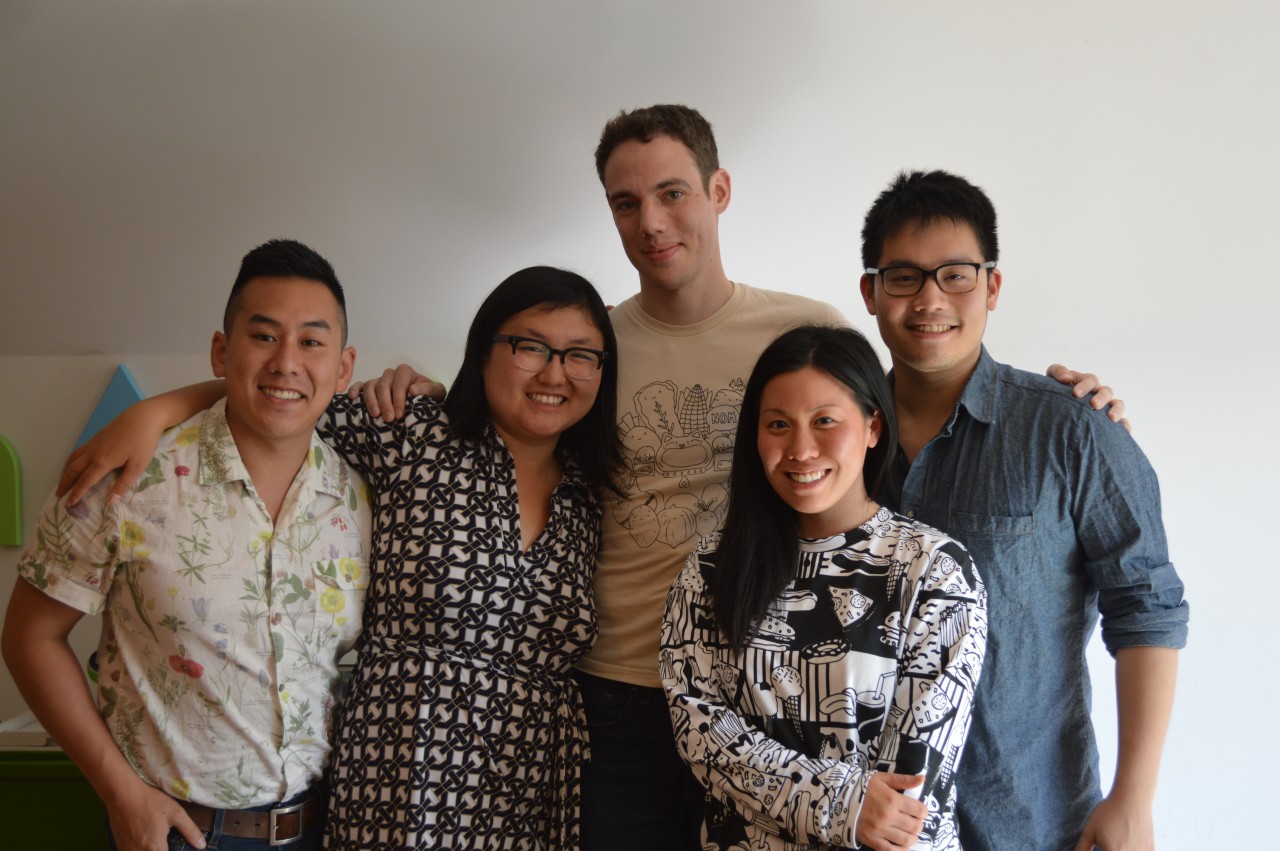
Megan Geuss
”We had it beaten into us that you have to go to China first,” Fetterman told Ars. “Their emphasis on efficiency is hard to understand [until] you’re there. I highly recommend going to China. It taught me things that are hard to learn from a book.”
Still, although backers on Kickstarter seem to be comfortable with the “made in America” pledge (as of this writing, the company has raised $300,000 and still has 25 days to go), investors aren’t quite there yet. “I attempted to raise money for Nomiku through the traditional round of investors and they all said no to me because they said [production in America] is too pious. And for the first round, it absolutely was. For the first round we had no idea how to go about this at all.”
But Fetterman is used to venture capital being a little short-sighted: “That’s exactly what happened the first time too, we got them in there and cooked for them and they all said ‘what the fuck is a sous-vide egg, no one’s going to cook with this.’ And now hundreds of thousands of people are doing it.”
“We need to show them that it works,” she said.
[ad_2]
EmoticonEmoticon